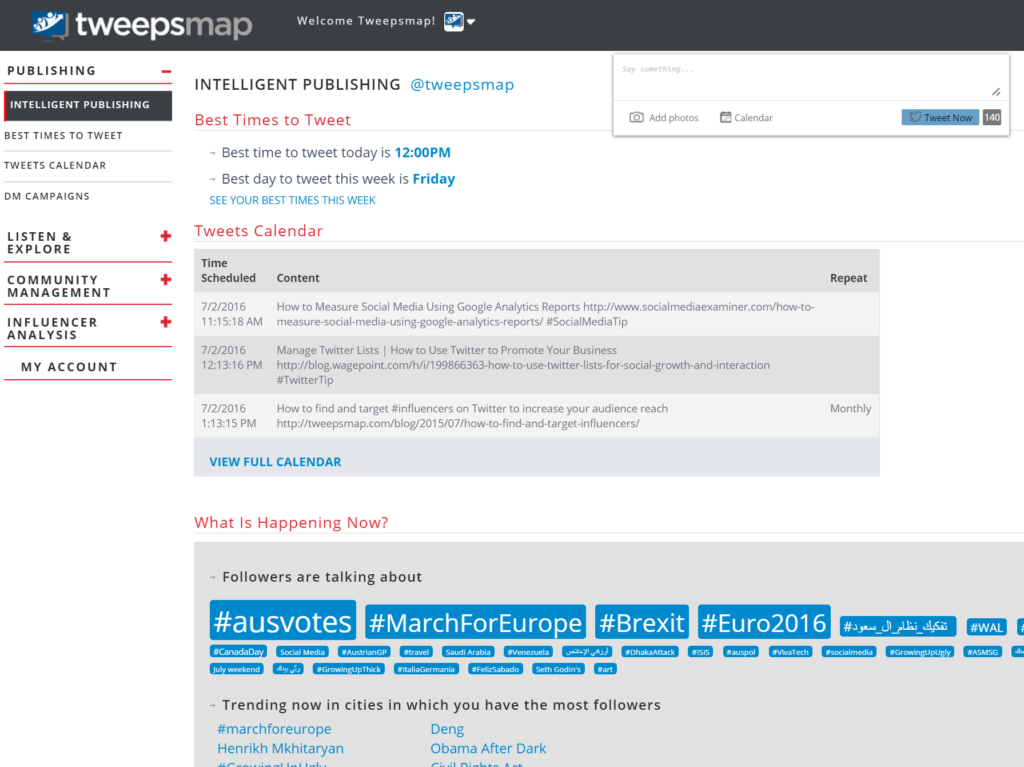When you want to listen to music now, or even find new music, you’ve got a ton of options. Through Internet radio and social media, you have access to almost every single artist in the world.
Now think back a couple decades to the 90s. If you’re an artist, what are your options for sharing your music with the world? If you’re a listener, where do you go to find new music? In the 1990s, your options were extremely limited. For artists, word of mouth and radio endorsement was how you got famous, while listeners had to turn on their radio and scope out CD stores to get new music. There was also a level of risk involved that many didn’t partake in – there weren’t any real ways to sample or find music without buying it first.
Fast-forward to 2003. MySpace becomes the biggest Internet trend and musicians jump on the opportunity to share their music with a large, connected audience. This is what truly started the relationship between social media and musicians, and it’s a trend that has continued on to this day.
Still, there are things to be learned from the past, especially what made social media so attractive to musicians in the first place.
Brand Management Opportunities
Like it or not, musicians are a brand. Just like other companies that need to pay close attention to their images, celebrities in any industry typically have to maintain their image in order to succeed. Brand management is also about connecting with fans in a positive way via photos, videos and their social media interactions.
In decades past, this sort of thing was handled by a PR team and displayed in magazines, on the news and in fringe Internet sites (if you’re still thinking of the 90s, anyway.) Now on Twitter, musicians have instant access to posting and sharing photos with fans in order to maintain their brand.
Making More Personal Connections
Nothing says “they’re just like me” more than a celebrity up at 2AM tweeting about the last “Game of Thrones” episode while showing off images of the pizza they just consumed. Social media offers musicians a way to personally connect with fans in a way that helps to remove them from the pedestal many fans place them on.
It also makes it easier for fans to get connected with musicians they love. While many still do write fan mail, it’s much easier to tweet a musician or mention them in order to get their attention and profess love. Inversely, leveraging Tweepsmap All-in-on Intelligent Publishing dashboard, musicians know in real-time what THEIR fans are talking about, and then they can engage and drive the relevant discussions.
One powerful way artists can engage with their audience is through a DM campaign. Through Tweepsmap, a Twitter user can set up a targeted DM campaign that automatically sends a certain message to a segment of fans and followers. This can be a great method to announce specific news, like a certain music sale promotion or a performance in a specific city. Effectively, the sophisticated DM campaign tool takes the spam out of traditional DM and makes it more of a conversational tool with the relevant sub-segment of the followers. This also further connects musicians with fans in a real, personal way.
Exclusivity
Back in the day, the only truly exclusive music moments and deals fans had access to were if they happened to be a certain number caller to a radio program or they happened to know someone in the industry. Discounts on CDs? Go to a thrift store or the local used music store.
Now social media followers can get exclusive offers from their favorite musicians practically in real-time, anywhere and anytime. Using streaming platforms like Twitter’s partner Periscope, John Mayer would frequently livestream guitar sessions to fans, and is considered the first musician to popularize the platform. Fans following musicians on Twitter also have first-come access to news and updates about artists releases, as well as giveaways and other promotional offers.
Because social network sites like Twitter offer celebrities instant and personal access to fans, the relationship between social media and musicians will remain strong. This sort of mutually beneficial partnership is something that can teach other businesses a lesson as well – when you give an audience what they want, they’ll be there for you.
As the social media revolution grows, musicians will continue to use sites like Twitter as their main form of connecting with those who love them. Whether it’s through a DM campaign or simply sharing their thoughts on the social media platform, a performer’s relationship with Twitter will always be strong – and something they can foster through Tweepsmap services.


